Yasukuni Jinja1, as the famous Shinto shrine is known is a quiet, serene and idyllic place in the middle of Tokyo’s Chiyoda-Ku. Local neighbouring residents, school children, young and elderly visit every day some time to pray and sometimes just to pass time or to engage in some creative activity. The complex is bustling with activity all the time. The shrine is a religious institution administered by a religious authority established to oversee the functioning of all Shinto shrines all over Japan. Yasukuni, of course, is special and has its own managing committee comprising of associated priests. Being one of the largest Shinto shrines this is always on the tourist itinerary and the guide there will tell you all about the history, the architectural uniqueness and mentions about controversies only in passing.
In spite of being a religious institution the Shrine has become an object of political controversies not only within Japan but more so internationally. Most recently a Chinese actor Zhang Zhehan has raised a storm on the Chinese social media by innocently posting his picture of the Yasukuni Shrine that was taken three years ago in 2018 when he visited the shrine.2 He has been subjected to much ridicule. Thousands of his fans have deleted his account and 20 odd corporate for whom he was the brand ambassador have withdrawn their contracts. Moreover, he is being boycotted by the China Association of Performing Arts (CAPA). Music platform NetEase, Cloud Music and QQ Music have removed his songs. The streaming site Youku has also deleted Zhang's name from the credits list of his TV drama. Video-sharing platform Douyin announced that it has cleared Zhang's account as "his behaviour is harmful and has a negative impact on the society especially the youths". Chinese authorities regard Yasukuni Shrine as a symbol of Japanese militarism and aggression. Both China and Korea have protested on various occasions especially whenever an important Japanese political figure has paid visit to the shrine. Recently, the Chinese government lodged strong objections when on August 15 the Japanese Prime Minister Yoshihide Suga sent offerings to the Yasukuni Shrine on the occasion of the 76th anniversary of Japan's surrender in World War II. However, the case of Chinese actor Zhang Zhehan is unique as it is for the first time that the visit of a private individual has raised such a storm. In view of Japan’s imperialist war of aggression against China, Chinese sensitivity is understandable.
Global Media
Such protests have become particularly strident after 1980s and subject of media coverage worldwide. Global media often focuses on the fact that 14 of the top political-military leaders of Japan’s imperial government during the Pacific War who were declared by the International Military Tribunal for Far East (IMTFE) “Tokyo Trial” as war criminals are enshrined in the Shrine. Because of this, most people outside Japan seem to believe that the Yasukuni Jinja was built primarily to commemorate these war time leaders. To understand the complexity of the problem and situate the issue in a holistic perspective we need to delve little deep into the history. A historical perspective only will help analyse the social, religious, cultural and political significance of Yasukuni Shrine in Japanese society and postwar evolution of causes and consequences of controversies.
Culture and Traditions
Every society in the world would like to commemorate its citizens and particularly the soldiers who have sacrificed their lives for the cause of the nation. Such monuments have been built all over the world in respective countries. Yasukuni shrine was also built to commemorate the war dead in the middle of the nineteenth century. It was built in 1869 just a year after the Meiji Restoration. The immediate inspiration to commemorate the war dead came from the Boshin War that catapulted Emperor Meiji to power and launched Japan on Shinkansen speed of modernisation. Along with this the warriors perished in Seinan War and Saga Uprising were also honoured. Originally the shrine was called Shokonsha which was established at Kudan district of Tokyo. Only after five years it was renamed as Yasukuni when the Emperor Meiji himself visited the shrine first time on 27 January 1874 and made offerings. Yasukuni means “preserving peace of the entire nation”. To mark this occasion the Emperor also composed a poem that translates as “I assure those of you who fought and died for your country that your names will live forever at this shrine in Musashino.” Later on all the people who perished during various wars, the Sino-Japanese and Russo-Japanese war, World War I, the Manchurian Incident, the China Incident and the Pacific War were added. Altogether there are 2.5 million deities enshrined in Yasukuni. These include not just Japanese citizens but also Taiwanese, Koreans, Philippinos, Indonesians, Malay, Thais and anybody and everybody who ever contributed for Japanese nation. It includes thousands of women and school girls who supported the relief operations for war time soldiers; students who kept factories working, as well as civilian personnel, civil-service workers, private citizens etc. All these people regardless of their rank or social standing are considered to be completely equal and worshipped as venerable divinities of Yasukuni. They all have attained the status of deities (Kami) as per Shinto tradition. Honouring their deceased and ancestor worship in this way is an age old tradition in Japanese society acquired at the time of introduction of Brahmanical Buddhism in the Shotoku period.
Controversies and Apologies
Yasukuni had been closely associated with the Royal household of Japan but now it is no longer supported by the government since 1945. Controversies began to arise only after the enshrinement of 14 war time leaders in 1978 that were tried as Class A war criminals. Emperor Hirohito, in whose name Japanese soldiers fought the Pacific War visited Yasukuni Shrine only eight times between 1951 and 1975. He stopped visiting the shrine since then due to displeasure over critical media coverage. His son and successor Emperor Akihito never visited the Shrine nor did he send any offerings. The present Emperor Naruhito has publicly announced never to visit the Shrine.
People have been visiting the Shrine for prayers and propitiation ever since its establishment. At present nearly 5 million people visit the Shrine every year. In December 2013 for the first time in seven years the sitting Prime Minister of Japan Abe Shinzo paid a visit to the Shrine. The visit attracted wide criticism within Japan as well as internationally. The government of South Korea took strong countermeasures as mark of protest. The US department of State and the US embassy in Japan issued critical statements. Russia declared its firm opposition to Abe's visit. Many other Asian countries including Singapore, Pakistan and Indonesia all expressed regret and shock over the act. The then UN Secretary General Ban Ki-moon and Germany urged Japan to "be sensitive to the feelings of Asian people" and to honour its commitment to repent for its history of aggression. China has always firmly opposed the visits by the Japanese politicians stressing that Japan should reflect deeply on the history of its aggression.3 However, it is interesting to note that China’s official mouth piece “Global Times” does not consider the visits necessarily promoting the revival of militarism.4 Abe Shinzo visited again in September 2020 to which he tweeted "Today, I paid a visit to the Yasukuni Shrine and reported to the souls of the war dead that I resigned as prime minister on September 16."5 This visit also became an object of wide criticism. But being sensitive to international opinions and in deference to the ‘sentiments of the neighbouring countries’ Abe Shinzo has taken a public vow not to visit the Shrine in person but send only offerings.6 This year Abe did not visit the Shrine but sent offerings. Prime Minister Yoshihide Suga has not visited the Shrine either as the law maker or as the prime minister but he sent offerings.
Diplomacy and Posturing
In the context of controversies and apologies it is important to keep certain facts in perspective. Most of the important government officials, bureaucrats and politicians who have been criticised for their prayers at Yasukuni have been visiting the Shrine even before the enshrinement of Class A war criminals in 1978. Enshrinement became public knowledge in 1979 and no voice of protest was raised from any quarters national or international. A number of foreign dignitaries have paid visits to the shrine even after the enshrinement. 7 Many of the “accused” politicians have won elections and become ministers. They have been received as official guests in the very same countries that have raised voices of protest.
Voices of protest became strident since 1980s when the economic emergence of Japan began to be seen as the global disrupter of existing international economic order. Alvarez et al clearly mark 1980s as the date for the rise of such criticism8. In 1981 Ezra Vogel even wrote “Japan as Number One”. Most of the officials and politicians who have been subjected to criticism have expressed apologetic remorse over Japan’s war time excesses. Wikipedia has devoted two full pages enumerating year wise the names of such people9. In a very significant move in 1990, despite sensitivities of domestic politics, Emperor Akihito apologised to the Korean people for the atrocities committed during colonisation. The then Prime Minister of Japan Kiichi Miyazawa in a speech made at the Korean National Assembly in 1992 expressed his sincere apologies to the country’s former colonies. Three years later, Tomiichi Murayama officially apologised for the attacks on the countries of the region during the war and urged the Asian Women's Fund to compensate former sex slaves of the imperial army of Japan.10 Despite his contradictions Abe Shinzo also apologized for past mistakes in 2007 and 2015. Such remorse and apologies do not seem to have assuaged the feeling of hurt with no progress towards reconciliation in East Asia; yet the business goes on. It appears that such protestations are aimed more at domestic posturing and a bargaining chip to extract better terms of negotiations with Japan on the issues of international trade, investment and development.
In democratic societies when issues get embroiled in sentimentalism finding amicable solutions becomes a herculean task. Yasukuni controversy is enmeshed in complex sentimentalism of multiple kind; nationalism, familial, religious, cultural and sentiments related to traditions and theological precepts. Various proposals made to alleviate the controversy have faltered due to such sentimentalism. One of the proposals calls for removal of controversial spirits and place them in a different location. Although this move has been supported by China and Korea but two major impediments have deterred its implementation. Firstly, under the principle of separation of religion and state the government is unable to force the Shrine. Secondly, the theological precepts of Shintoism hold that once a kami has been housed at the shrine it cannot be separated.
A theologically valid method under the Shinto tradition of bunrei and kanjō has been advanced to first abolish the entire enshrinement then repeat the entire enshrinement rite of kami since the Boshin War excluding the class A war criminals. Some knowledgeable people argue that selective abolishment of enshrinement is technically possible as there are several precedents of selective de-enshrinement in the Tokugawa era. The Shinto processes of bunrei and kanjō specifically exist to remove a kami from its shrine and re-enshrine elsewhere but the tradition holds that this process typically leaves the kami at the original shrine intact and unchanged.
Another proposal relates to the creation of a separate secular memorial where the prime minister can make official state visits for memorial purposes. Critics among Izokukai point out that the families of the war dead express no interest in such a memorial and would like their dead remain enshrined in the Yasukuni Shrine. Furthermore, the Japanese government already conducts yearly secular commemoration services at the Budokan for the families of soldiers killed in World War II. Afterwards, these families usually make private visits to Yasukuni Shrine which is located within walking distance. Since the proposed memorial site is geographically distant, visiting proposed memorial would become more difficult. It is important not in this context that a number of families of the names listed at the shrine have expressed their concerns that the controversy is disturbing the peaceful rest of their dead family members and that they wish to pay homage to them without controversy and media attention.
On 28 October 2005 the Liberal Democratic Party (LDP) and the Democratic Party of Japan (DPJ) agreed to set up a cross-party "group for pushing forward the establishment of a national memorial facility" to lay foundation of a secular war memorial dedicated only to "ordinary" soldiers. This would replace Yasukuni Shrine as the home of Japan's war dead. There is in fact a memorial to the Japanese (unidentified) soldiers within walking distance of Yasukuni called Chidorigafuchi National Cemetery which has been suggested as an alternative site for Japanese politicians to pay their respects to those who died during the war. In view of the LDP-DPJ group’s inability to “push forward” a viable road map the solution has remained intractable.
Japan is on the cusp of a great power leap and cannot afford to allow such controversies to plague its relations with its neighbours and allies nor can it afford a tumultuous and divisive political storm rising up every time in domestic politics. No amount of external pressure can help in providing a solution; on the contrary it may stir up phony nationalism which can only hamper Japan’s march towards a new civilisational role. Japan must find solution of its own like Germany. China boasts of being capable of sorting out the issues on its own terms and some sort of concurrence seem to have appeared between Japan and China11 but Korea remains a delicate concern. The issue of “comfort women,” even if there are only a few survivors now, is a matter of deep hurt of Korean national pride and honour. The hurt gets deeper when a realisation takes over that Japan doesn’t care. Japan is in position to find an honourable solution and it will be useful to carry along a close ally in its march towards Indo-Pacific strategy.
One of the methods that comes to the mind of this author is to organise a national reconciliation body comprising mainly of intelligentsia, academic, media, NGOs, Izokukai, women’s group and even students, farming communities and workers with a clear mandate to build consensus within a defined time frame to come out with a definite solution.
Beneficence is the hallmark of great civilizations. An aspiring and emerging great ‘flower power’ driven by civilisational ideals of Brahmanical Buddha must shed its war memories in all its forms.
References:
- The shrine has some unusual architectural features. First, the front Tori (gate) is made of steel and the second is made of bronze instead of usual wood. Inside, there are numerous military relics of the colonial era on display, including artillery pieces and a kamikaze torpedo guided by a suicide pilot.at:https://www.orientalarchitecture.com/sid/236/japan/tokyo/yasukuni-shrine
- Jiji News Agency. 26 December 2013
- Opinion Global Times: ‘Visits to Yasukuni shrine don’t necessarily indicate militaristic trend in Japan’ Global Times, 19 October 2020.
https://www.globaltimes.cn/content/1203993.shtml - Japan Times, 19 September 2020 he tweeted with a photo of himself escorted by a priest.
- Jiji News Agency. Tokyo, Japan: Aug 09, 2020.
- ‘Controversies surrounding Yasukuni Shrine’. Wikipedia.
- Álvarez, Maria del Pilar; Lunaklick, María del Mar; Muñoz Tomás (2016).
"The limits of the forgiveness in international relations: groups supporting the
Yasukuni shrine Japan and political tensions in East Asia", JANUS.NET e-journal of International Relations, Vol. 7, Nº. 2, November 2016- April 2017. Consulted [online]on the date of last consultation,observare.autonoma.pt/janus.net/en_vol7_n2_art3
at:http://hdl.handle.net/11144/2782) - List of war apology statements issued by Japan Wikipedia
- Ministry of Foreign Affairs. Statement by Prime Minister Tomiichi Murayama “On the occasion of the 50th anniversary of the war's end", 15 August 1995.
- Akiko Takenaka, "Networks of Grief and Pride: Yasukuni Shrine in Regional
Japan."In Yasukuni Shrine: History, Memory, and Japan’s Unending Postwar, 74-93.
Honolulu:University of Hawai'i Press, 2015. Accessed August 19, 2021.
http://www.jstor.org/stable/j.ctvsrh32.7. - "All quiet on the Eastern front?”. The Economist. 26 February 2008. Archived from the original on August 18, 2021.
(The paper is the author’s individual scholastic articulation. The author certifies that the article/paper is original in content, unpublished and it has not been submitted for publication/web upload elsewhere, and that the facts and figures quoted are duly referenced, as needed, and are believed to be correct). (The paper does not necessarily represent the organisational stance... More >>
Image Source:



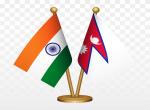

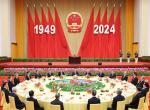
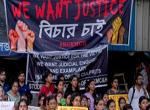

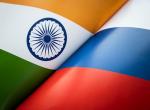
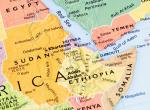
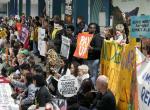
Post new comment